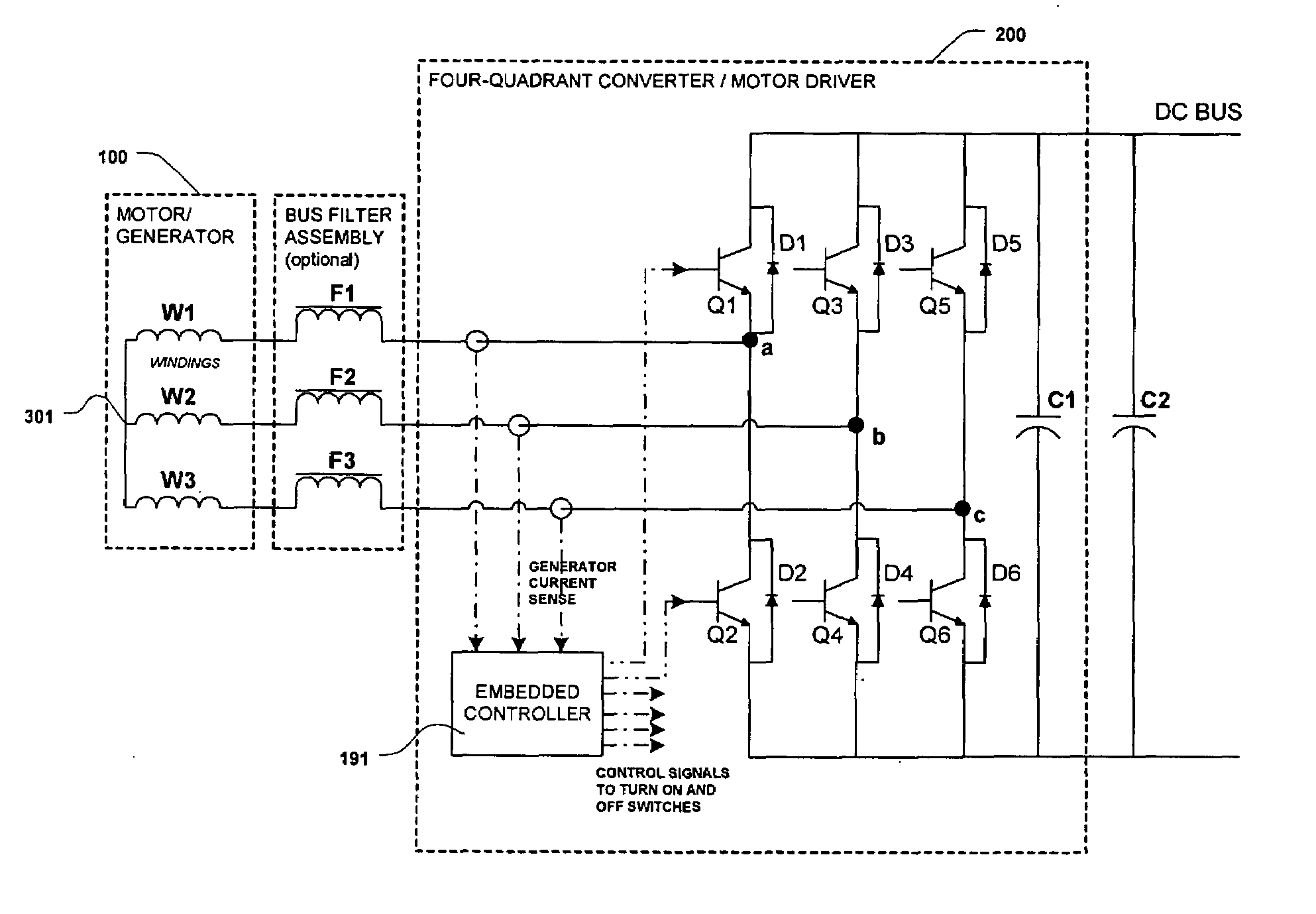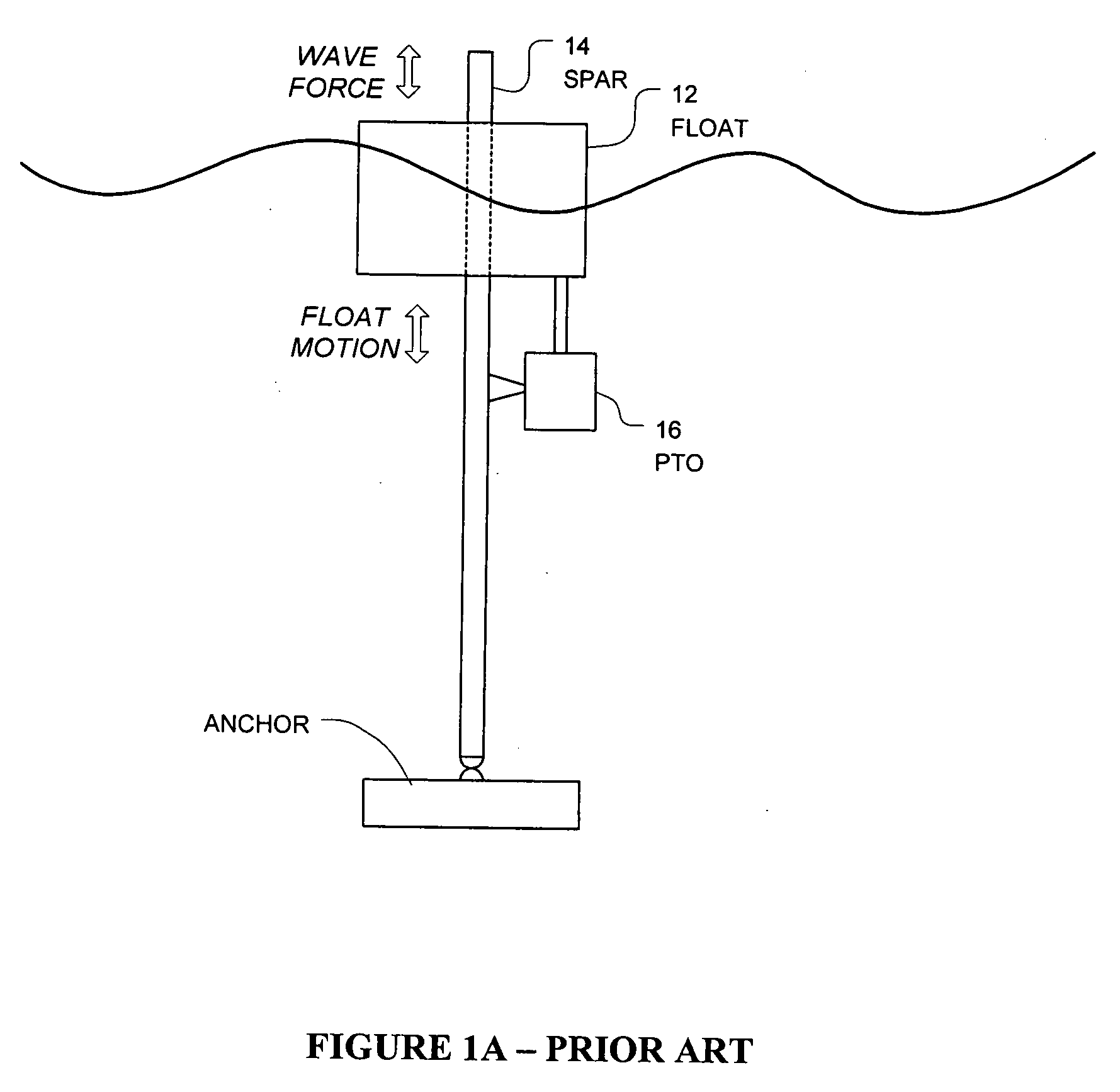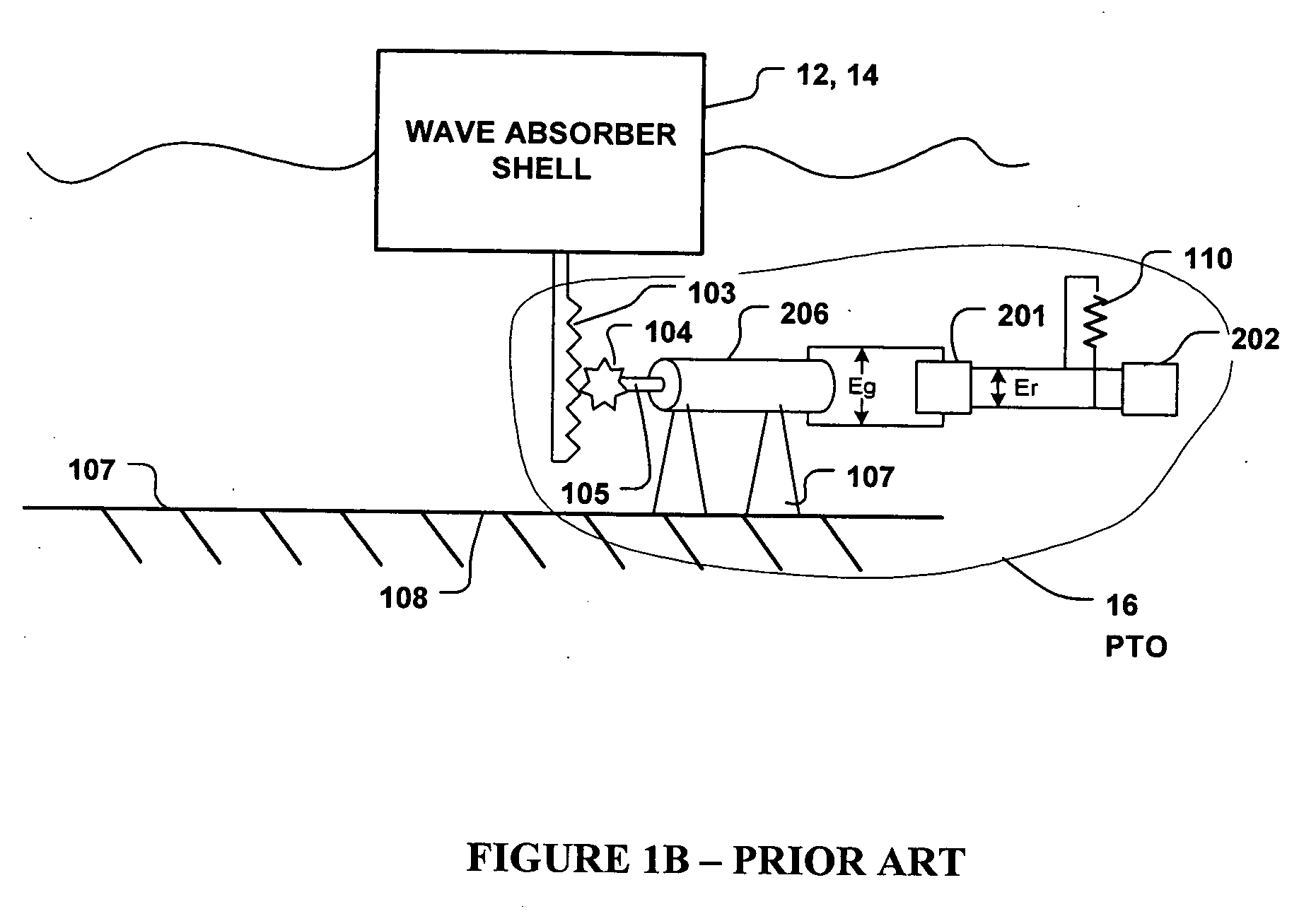Coil switching of an electric generator
- Summary
- Abstract
- Description
- Claims
- Application Information
AI Technical Summary
Benefits of technology
Problems solved by technology
Method used
Image
Examples
Embodiment Construction
[0037]FIGS. 1A and 1B show generalized versions of an ocean wave energy converter (WEC). A float (or shell), 12, moves up and down relative to a spar, 14, that is anchored to the sea floor. Alternatively, the spar is not anchored and may be allowed to move so as to move out of phase relative to the float. A power-take-off device (PTO), 16, coupled between the float and the spar converts the mechanical power available from the WEC into electrical power. In FIG. 1B, the PTO device includes a linear-to-rotary translator (e.g. rack and pinion gear assembly, ball screw assembly, hydraulic cylinder and motor assembly, or pneumatic cylinder and motor assembly) coupled to a rotary electric generator. In this system the generator's rotational velocity is proportional to the relative velocity between the float and spar. The output voltage, Eg, of the generator is in turn approximately proportional to the rotational velocity of the generator shaft as illustrated in FIG. 2.
[0038]As shown in FIG...
PUM
 Login to View More
Login to View More Abstract
Description
Claims
Application Information
 Login to View More
Login to View More - Generate Ideas
- Intellectual Property
- Life Sciences
- Materials
- Tech Scout
- Unparalleled Data Quality
- Higher Quality Content
- 60% Fewer Hallucinations
Browse by: Latest US Patents, China's latest patents, Technical Efficacy Thesaurus, Application Domain, Technology Topic, Popular Technical Reports.
© 2025 PatSnap. All rights reserved.Legal|Privacy policy|Modern Slavery Act Transparency Statement|Sitemap|About US| Contact US: help@patsnap.com



